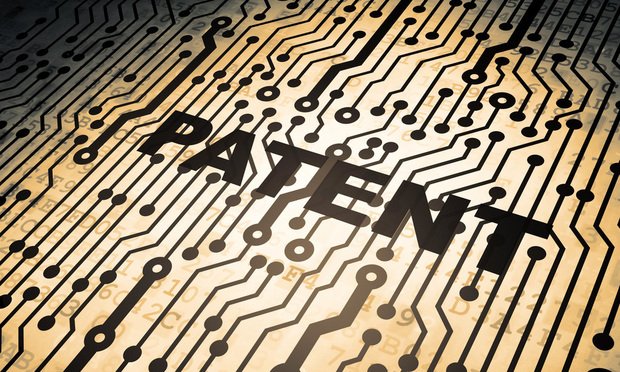Columns & Departments
IP News
Federal Circuit Clarifies Motivation to Combine to Achieve the Claimed Invention and Holds IPR Petitioner Must Be Given Opportunity to Reply Where Patent Owner First Proposes Claim Construction In a Response
Features

A Diverse Patent Portfolio Better Protects Artificial Intelligence Inventions
Takeaways from 'IBM v. Zillow' from A Patent Drafting Perspective Part One of a Two-Part Article This two-part article sheds light on several important aspects of patents on AI technology. In Part One, we provide a general overview of the IBM v. Zillow lawsuit and discuss strategies to diversify patent portfolios to maximize protection on AI-related technology.
Features

The Intersection of Generative AI and Copyright Law
Whether prompted to write a corporate slogan, create music, generate works of art and advertisements, or summarize a book — GAI can do it all. However, its increasing popularity means that users of GAI programs face substantial intellectual property risks — particularly when businesses use GAI for marketing and other public-facing purposes.
Features

Trade Secrets Management In Taiwan
Recognizing the value of trade secrets, many countries have successively enacted and amended laws to strengthen the protection of corporate trade secrets.
Features

Who Is Legally Liable for Internet AI Deepfake Content?
Most agree that internet deepfake (deep learning + fake) content is widespread and may be used to manipulate the public, attack personal rights, infringe intellectual property and cause personal data difficulties. However, little agreement exists as to who is legally liable for internet AI deepfake content.
Features

Supreme Court's 'Bad Spaniels' Decision Didn't Overturn Rogers, But …
In a win for trademark holders, the U.S. Supreme Court offered a narrow ruling in the dispute involving "dog toys and whiskey."
Features

Understanding the Supreme Court Cases that Didn't Destroy the Internet: 'Gonzalez v. Google' and 'Twitter v. Taamneh'
The Internet is still standing, but the Supreme Court's reasoning in the Gonzalez opinion remains perplexing. Gonzalez and Taamneh are a story about how the Supreme Court "saved" the Internet from itself, and the Court needed both cases to do so.
Features

Should Foreign Companies Face Lanham Act Sanctions for Trademark Infringement Occurring Abroad?
The U.S. Supreme Court is considering whether the federal Lanham Act should be interpreted so broadly that domestic companies can leverage it to bar trademark infringement by — and seek significant damage awards against — foreign entities operating almost entirely overseas.
Features

Online Extra: The Other Recent Copyright Infringement Lawsuit Against Ed Sheeran
The lion's share of attention to copyright-infringement claims against Ed Sheeran over his song of the Year "Thinking Out Loud" recently focused on the trial in New York federal court in which a jury found in Sheeran's favor in the lawsuit brought by the heirs of a co-author of the 1970s soul-song classic "Let's Get It On." But in September 2022, a related infringement suit over the same songs' matching chord progression and harmonic rhythm was allowed to go forward.
Columns & Departments
IP News
Federal Circuit Examines the Analogous Art Test Federal Circuit Affirms PTAB's Finding of Prior Invention
Need Help?
- Prefer an IP authenticated environment? Request a transition or call 800-756-8993.
- Need other assistance? email Customer Service or call 1-877-256-2472.
MOST POPULAR STORIES
- Use of Deferred Prosecution Agreements In White Collar InvestigationsThis article discusses the practical and policy reasons for the use of DPAs and NPAs in white-collar criminal investigations, and considers the NDAA's new reporting provision and its relationship with other efforts to enhance transparency in DOJ decision-making.Read More ›
- The DOJ's Corporate Enforcement Policy: One Year LaterThe DOJ's Criminal Division issued three declinations since the issuance of the revised CEP a year ago. Review of these cases gives insight into DOJ's implementation of the new policy in practice.Read More ›
- The DOJ's New Parameters for Evaluating Corporate Compliance ProgramsThe parameters set forth in the DOJ's memorandum have implications not only for the government's evaluation of compliance programs in the context of criminal charging decisions, but also for how defense counsel structure their conference-room advocacy seeking declinations or lesser sanctions in both criminal and civil investigations.Read More ›
- Don't Sleep On Prohibitions on the Assignability of LeasesAttorneys advising commercial tenants on commercial lease documents should not sleep on prohibitions or other limitations on their client's rights to assign or transfer their interests in the leasehold estate. Assignment and transfer provisions are just as important as the base rent or any default clauses, especially in the era where tenants are searching for increased flexibility to maneuver in the hybrid working environment where the future of in-person use of real estate remains unclear.Read More ›
- Developments in Distressed LendingRecently, in two separate cases, secured lenders have received, as part of their adequate protection package, the right to obtain principal paydowns during a bankruptcy case.Read More ›
